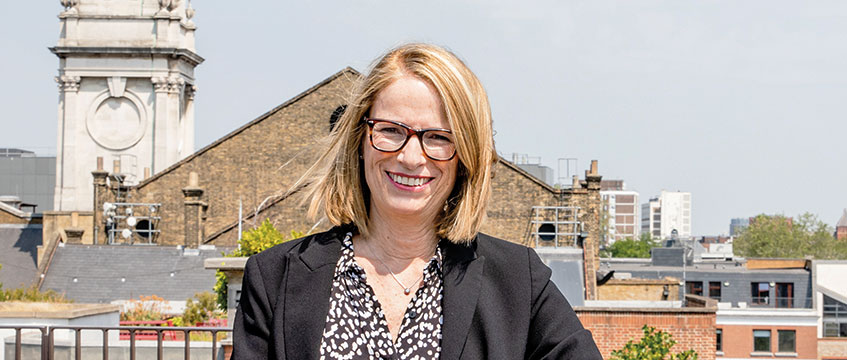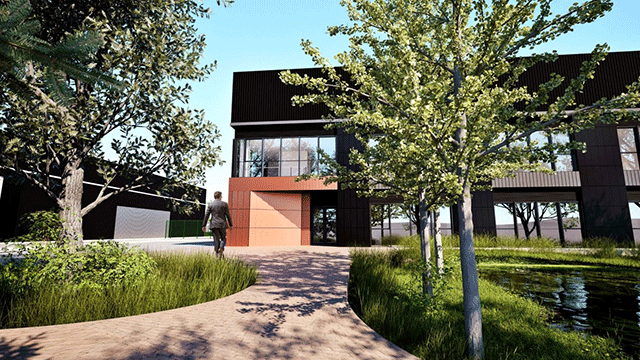COMMENT Aubrey Calderwood assesses the “super-deduction” and the tax incentives available for the conversion of commercial properties to hotels
Much has been written about the death of bricks and mortar retail, with the prospect of surplus space coming onto the market. Some sectors such as hotels and hospitality, which are experiencing an increase in demand for rooms and venues, may be able to take advantage of this changing landscape and find properties suitable for adaptive reuse in prime locations.
New-build hotels have historically been considered a more attractive and less complicated build option than the conversion of an old or existing property. However, in many instances, it may be difficult to find suitable sites in exactly the right areas, and the level of capital expenditure required to create a completely new hotel from the ground up may be prohibitive.
Tax incentives
A factor that is often overlooked when preparing a hotel development appraisal is the potential use of the tax incentives that are available for the conversion of an existing building to a hotel. With the new capital allowances “super-deduction” and other measures introduced in the Budget on 3 March, combined with the tax incentives already in existence, an adaptive reuse conversion project can be a very tax-efficient method of creating a hotel in an excellent location.
Many of these tax incentives are also available for new-build hotels, but there are additional reliefs that can be claimed on a conversion project. There is also the possibility of claiming capital allowances on a proportion of the acquisition price. A higher proportion of the conversion expenditure is likely to qualify for the tax relief due to the nature of the project.
For example, if a conversion project required the construction of new lift shafts in a different location in the building, that expenditure would qualify for tax relief under section 25 of the Capital Allowances Act 2001, namely, “Building alterations connected with installation of plant or machinery”. In a new-build hotel, the construction of the lift shafts and similar building-related expenditure would not qualify for any tax relief other than the structures and buildings allowance.
If the building contained contaminants, such as asbestos, the removal and treatment costs would attract land remediation relief, which would allow hotel operators and investors a 150% tax relief for the year the expenditure is incurred or, alternatively, may give rise to a tax repayment equivalent to 16% of the remediation cost in certain circumstances.
So, it can be seen that an adaptive reuse project may contain a cocktail of tax incentives aimed at encouraging investment and may attract some, or all, of the following reliefs, depending on when expenditure is incurred:
- plant and machinery allowances on initial property purchase;
- plant and machinery allowances on conversion costs;
- the super-deduction first-year allowance;
- the special rate first-year allowance;
- land remediation relief;
- structures and buildings allowances;
- revenue deductions for items of repair; and/or
- annual investment allowance.
Depending on the nature of the project, in circumstances where the super-deduction is available, a scenario could emerge where the tax allowances available are greater than the actual expenditure incurred.
How does the super-deduction work?
The super-deduction gives a 130% first-year allowance for qualifying expenditure in the year the expenditure is incurred. This means that £100,000 of qualifying expenditure will give rise to £130,000 worth of tax allowances, the equivalent of a £24,700 tax saving in the year, for a company paying corporation tax at 19%.
The super-deduction and associated special rate first-year allowances were introduced for companies incurring expenditure between 1 April 2021 and 31 March 2023. So, to benefit from this generous tax relief, any company contemplating a hotel project needs to get a move on. If the work was already contracted before 3 March 2021, unfortunately you will miss out.
Remember, the aim of the measure is to encourage and stimulate investment in the UK economy post-pandemic. That is all well and good if you are buying new equipment, machines or vehicles for a business because you can still act relatively quickly and take advantage of the relief.
However, construction projects have a much longer lead time, so unless firms entered into a contract after 3 March 2021 and started incurring the expenditure after 1 April 2021 but before the start of April 2023, super-deduction and special rate allowances cannot be claimed. This seems like a particularly egregious and unintended outcome for the property and construction industry, which is responsible for stimulating significant investment and demand in the economy generally and the wider supply chain.
All is not lost, however. For those not qualifying for the super-deduction rates because of timing issues, most of these tax incentives will still be available, but at reduced rates after 31 March 2023, when the corporation tax rate is set to rise to 25%. At that point, it will be even more crucial to maximise the tax incentives that are available because they will become the primary way for companies to mitigate their tax liabilities under the more punitive tax regime that will then exist. Qualifying expenditure of £100,000 will give rise to a £25,000 tax saving, but it will be given over a much longer period of time.
Final words
Adaptive reuse of existing commercial buildings can be a very tax-efficient way to create a new hotel property. There is a two-year window in which the tax incentives are particularly advantageous, but even after the expiry of the super-deduction period, many of the tax incentives will still exist and should be factored into development appraisals and claimed.
Aubrey Calderwood is the managing director of Gateley Capitus









